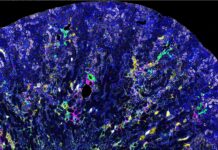LOUISVILLE, Ky. – Saturn is rotating five minutes faster than previously thought, a fact that sheds new light on the planet’s composition, a University of Louisville scientist has found.
An article on the discovery is scheduled to appear tomorrow in the journal Nature.
Wave patterns in Saturn’s clouds show that scientists have been using the wrong rotation rate for the planet, says UofL planetary atmospheres researcher Timothy Dowling, who collaborated with researchers at the University of Oxford and University of California-Los Angeles on the project.
Saturn’s rotation has been a long-standing puzzle. Researchers have been able to measure the rotation of the other gas giant planets–Jupiter, Uranus and Neptune–because they all have tilted magnetic fields that swivel around like a lighthouse beacon. Saturn’s magnetic field, however, is pointed straight up and down, making it impossible to see its spin.
“It’s our second-largest planet and we’ve never known the length of its day,” Dowling said. “It’s like trying to listen to recorded music without knowing what speed to play the tape.”
Dowling, who has studied the planets for 18 years with NASA funding, had previously tracked large waves in Jupiter’s atmosphere in earlier research. He and his colleagues were scrutinizing Saturn’s wind patterns when they noticed similar large waves there.
The team developed a 3-D model of Saturn’s waves using temperature data collected by NASA’s Cassini probe. After compensating for wind drift, they learned that the planet’s day was 10 hours, 34 minutes and 13 seconds long, or five minutes shorter than previously thought.
The finding offers new insight on Saturn’s density and interior structure, since the faster a planet spins the more concentrated its center has to be to maintain its planetary shape.
“It’s possible that Saturn could even contain a rocky core,” Dowling said.
An abstract of the research project appears at www.nature.com/nature/journal/v460/n7255/pdf/nature08194.pdf



























